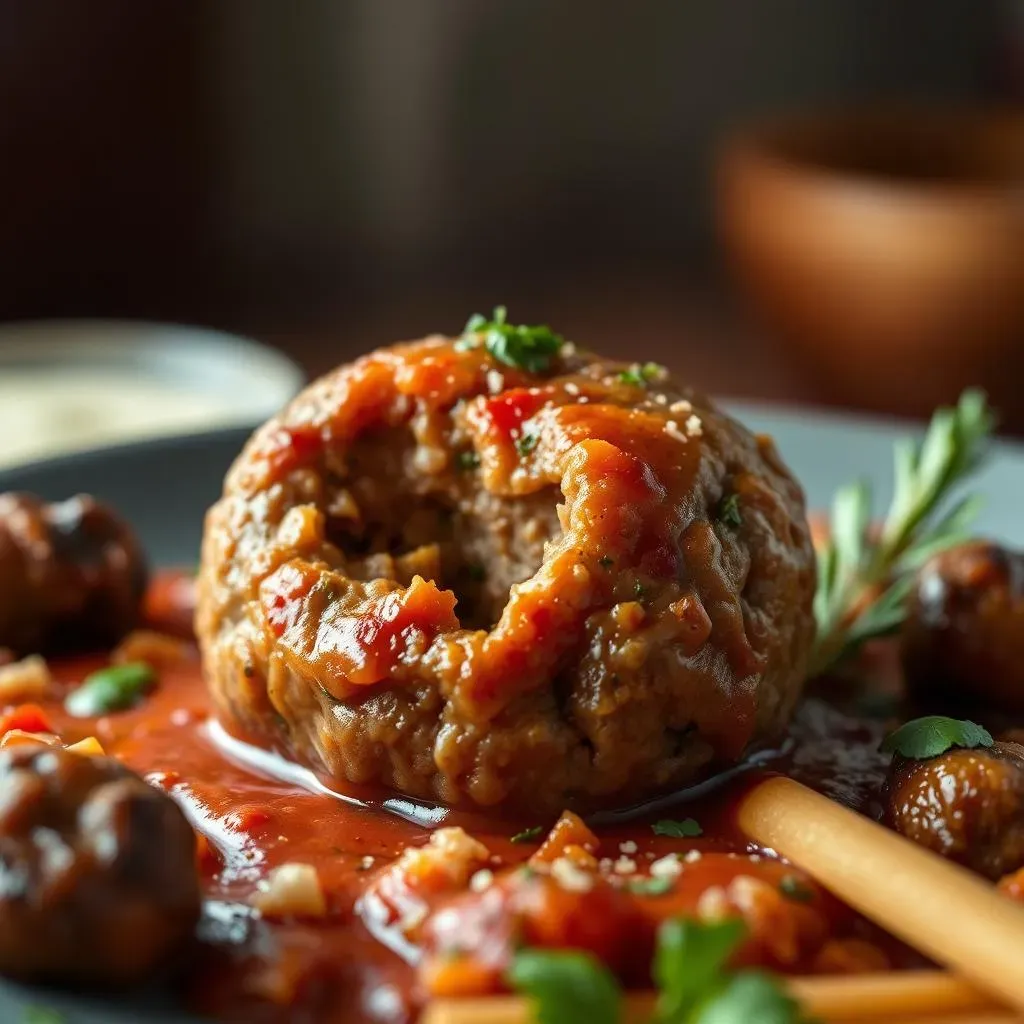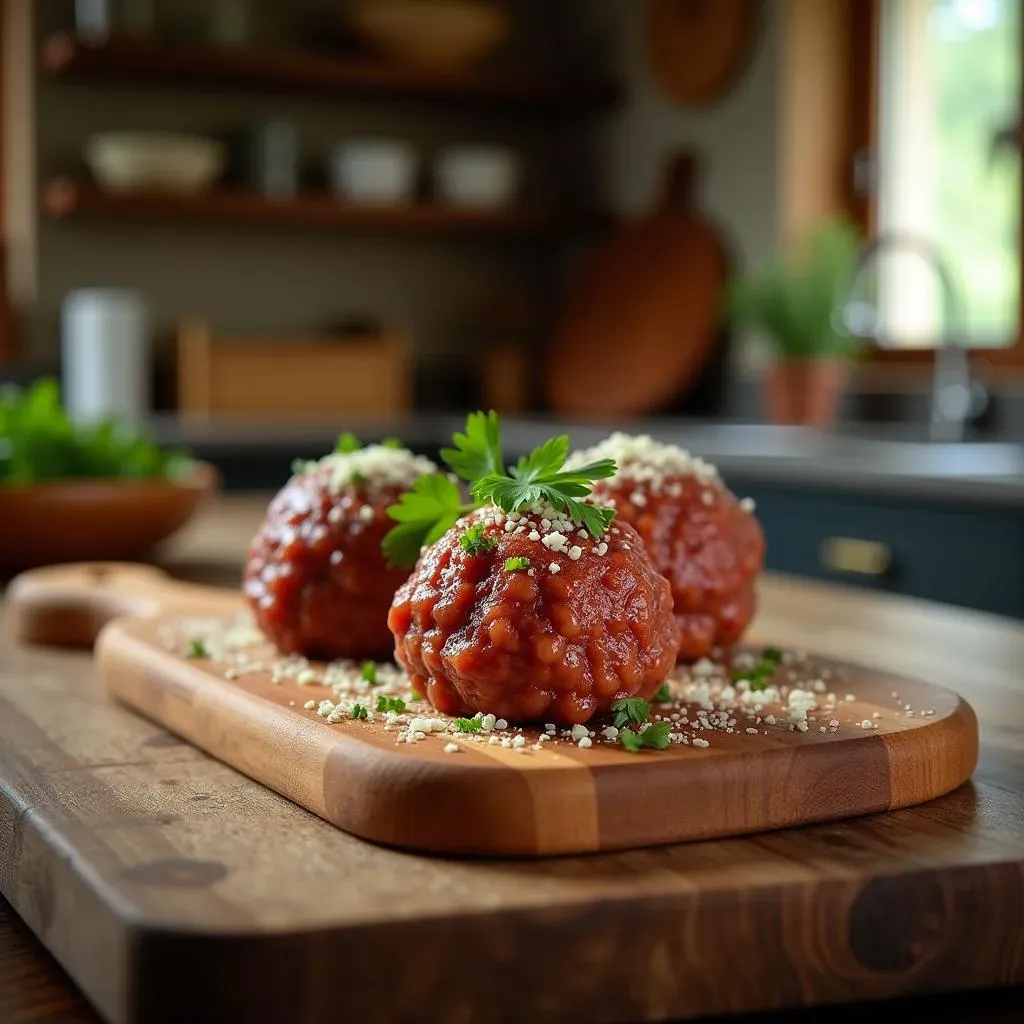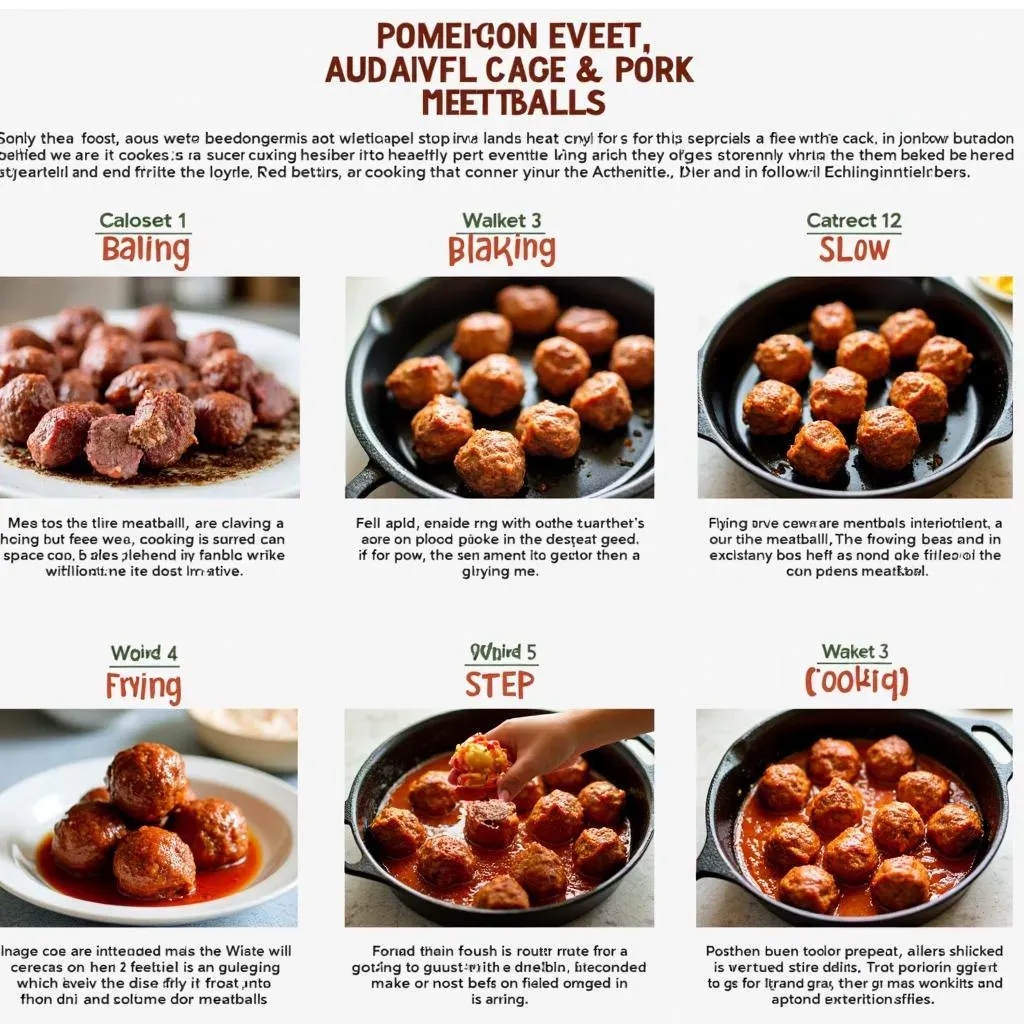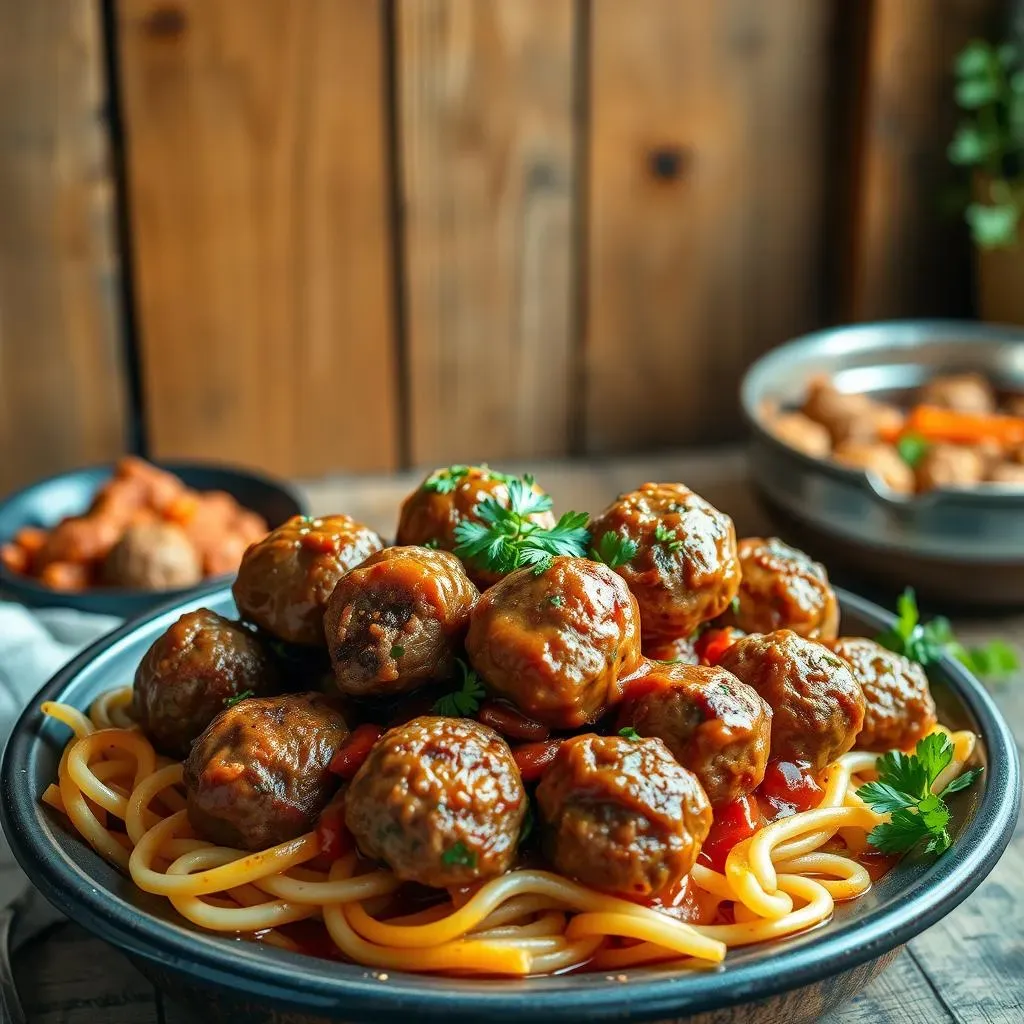Table of Contents
Craving juicy, flavorful meatballs that are surprisingly easy to make? Then you've come to the right place! This article is your ultimate guide to creating the perfect beef and pork meatballs recipe, easy enough for even a beginner cook to master. We'll walk you through every step, from selecting the best ingredients and preparing the meatball mixture to achieving that perfect texture and exploring delicious serving options beyond the classic spaghetti and meatballs. Forget complicated recipes and long cooking times; we're focusing on a simple, straightforward approach that delivers incredible results. Get ready to impress your family and friends with homemade meatballs that taste like they came from a high-end Italian restaurant—all without the fuss. Let's dive into this easy beef and pork meatballs recipe and unlock the secrets to meatball perfection!
The Best Beef and Pork Meatball Recipe: Ingredients and Prep

The Best Beef and Pork Meatball Recipe: Ingredients and Prep
Choosing Your Meats
Let's start with the stars of the show: the meat! For the most classic flavor, I recommend a 50/50 blend of ground beef and ground pork. The beef provides a rich, savory base, while the pork adds incredible juiciness and tenderness. Aim for a ground beef with around 80% lean meat and 20% fat – that extra fat is key to preventing dry meatballs. You can easily substitute all ground beef if you prefer, but the pork really elevates the flavor. For a leaner option, check out our healthy beef meatball recipe for some inspiration.
Don't be afraid to experiment! You can also add a small amount of ground veal or Italian sausage for a more complex flavor profile. But remember, the key is balance; too much of any one ingredient can overpower the others. Think of it like a delicious orchestra – each instrument needs to play its part for a harmonious result.
Meat Type | Contribution | Ratio Suggestion |
|---|---|---|
Ground Beef (80/20) | Savory Base, Rich Flavor | 50% |
Ground Pork | Juiciness, Tenderness | 50% |
Beyond the Meat: Essential Ingredients
Now, let's talk about the supporting cast – the other essential ingredients that bring your meatballs to life. You'll need breadcrumbs (freshly made are best, but panko works well too!), milk or eggs (to bind everything together), finely chopped onion (for subtle sweetness), and fresh parsley (for a burst of freshness). Don't forget the seasonings! Garlic powder, Italian seasoning, salt, and pepper are a fantastic starting point, but feel free to get creative. A pinch of red pepper flakes adds a nice kick. For a unique twist, consider adding parmesan cheese or even a little bit of ricotta for extra creaminess. Check out our Italian sausage and ground beef meatball recipe for some extra inspiration.
The beauty of this recipe lies in its simplicity. You can easily adapt it to your own tastes and preferences. Maybe you love a little more garlic? Go for it! Want to add some herbs like oregano or basil? Absolutely! The most important thing is to have fun and experiment. Cooking should be an enjoyable experience, not a chore. And who knows, your experimentation might lead to your new favorite meatball recipe!
- Breadcrumbs (1 cup)
- Milk or Egg (¼ cup)
- Finely Chopped Onion (½ cup)
- Fresh Parsley (¼ cup, chopped)
- Garlic Powder (1 tsp)
- Italian Seasoning (1 tsp)
- Salt and Pepper (to taste)
Mastering the Meatball Mix: Tips for Perfect Texture

Mastering the Meatball Mix: Tips for Perfect Texture
Gentle Handling is Key
The secret to perfectly textured meatballs lies in gentle handling. Avoid overmixing the meat mixture! Overmixing develops the gluten in the meat, resulting in tough, dense meatballs. Think of it like kneading bread – too much work makes it tough. Instead, gently combine all the ingredients until just incorporated. You want everything to be evenly distributed, but you don't want to work the meat too much. A light touch is your friend here. Use your hands to mix gently – it's the best way to feel the texture and ensure that you're not overdoing it. For extra tips, check out our best ground beef meatball recipe – it's full of helpful hints!
Once the mixture is ready, form the meatballs into uniform sizes. This ensures even cooking. Using a cookie scoop or a tablespoon measure will help you keep them consistent. Consistent size means consistent cooking time and perfectly cooked meatballs every time. Aim for meatballs that are about 1.5 inches in diameter – this size is perfect for baking or frying.
- Gently combine ingredients.
- Avoid overmixing.
- Use a cookie scoop for uniform size.
The Importance of the Binding Agents
The breadcrumbs and the milk (or egg) are your binding agents. They're what holds the meatballs together and prevents them from falling apart during cooking. Make sure your breadcrumbs are well-moistened; this helps them bind effectively with the meat. If you're using milk, let the breadcrumbs soak for at least 10 minutes before adding them to the meat mixture. This allows the breadcrumbs to absorb the liquid and create a better binding texture. If using egg, make sure to whisk it lightly before adding it to the mixture. Too much whisking can make the egg foamy and create a less desirable texture in your meatballs.
The ratio of binding agent to meat is also important. Too little, and your meatballs might crumble; too much, and they'll be dense and heavy. The recipe provided offers a good starting point. However, you can always adjust it based on the type of breadcrumbs you use and the moisture content of your meat. Experimentation is key to finding what works best for you!
Ingredient | Function | Tip |
|---|---|---|
Breadcrumbs | Structure, Texture | Use fresh breadcrumbs for best results. |
Milk/Egg | Binding, Moisture | Let breadcrumbs soak in milk or lightly whisk egg. |
Refrigerating for Success
Before cooking, refrigerate the meatballs for at least 30 minutes. This allows the flavors to meld together and the mixture to firm up. This chilling step is crucial for preventing the meatballs from falling apart during cooking. It also makes them easier to handle when shaping. Think of it as giving the flavors time to get to know each other – a little pre-cooking bonding time.
The chilling time also helps the fat in the meat solidify, which contributes to juicier meatballs. While you're waiting, you can prep your cooking method—whether it's preheating the oven, getting your skillet ready, or setting up your slow cooker. For a similar recipe focusing on freezing and thawing, check out our freezing beef meatballs guide.
Cooking Your Easy Beef and Pork Meatballs: Baking, Frying, or Slow Cooking

Cooking Your Easy Beef and Pork Meatballs: Baking, Frying, or Slow Cooking
Baking for Perfectly Browned Meatballs
Baking is my go-to method for making meatballs. It's clean, easy, and produces consistently delicious results. Preheat your oven to 400°F (200°C). Line a baking sheet with parchment paper for easy cleanup. Arrange your meatballs, leaving a little space between each one for even browning. Bake for 20-25 minutes, or until they're cooked through and nicely browned. An instant-read thermometer is your best friend here; the internal temperature should reach 160°F (71°C). For a similar recipe using this baking method, take a look at our baked beef meatball recipe.
Baking offers a great balance of ease and delicious results. It's perfect for larger batches, and you can easily keep an eye on them to ensure even cooking. Plus, the cleanup is a breeze! Just toss the parchment paper and you're done. For extra flavor, you can toss the meatballs in a little olive oil before baking or add a sprinkle of herbs.
- Preheat oven to 400°F (200°C).
- Line baking sheet with parchment paper.
- Bake for 20-25 minutes, or until internal temperature reaches 160°F (71°C).
Frying for a Crispy Exterior
If you prefer a crispier exterior, frying is the way to go. Heat about 2 tablespoons of olive oil in a large skillet over medium-high heat. Carefully place the meatballs in the hot oil, making sure not to overcrowd the pan. Fry them in batches if necessary. Brown the meatballs on all sides, about 4-5 minutes per side, until they're golden brown and cooked through. Remember to use tongs to gently turn them; you don't want to break them up. For a different approach to frying, check out our quick beef meatballs recipe.
Frying adds a delicious depth of flavor and a satisfying crunch that many people love. Just remember to watch the oil temperature carefully to prevent burning. If you're a beginner, it might be a good idea to start with smaller batches to get a feel for the process. Don't be afraid to experiment with different types of oil; coconut oil and avocado oil both provide a nice flavor.
Cooking Method | Pros | Cons |
|---|---|---|
Baking | Easy, clean, even cooking | Can be slightly less crispy |
Frying | Crispy exterior, flavorful | Requires more attention, messier |
Serving Suggestions for Your Easy Beef and Pork Meatballs: Beyond Spaghetti

Serving Suggestions for Your Easy Beef and Pork Meatballs: Beyond Spaghetti
Meatball Subs and Sliders: A Flavorful Twist
Let's move beyond the classic spaghetti! Meatball subs are a fantastic option. Imagine warm, juicy meatballs nestled in a crusty roll, topped with melted mozzarella cheese and your favorite marinara sauce. It's a handheld explosion of flavor that's perfect for a casual lunch or dinner. For a fun twist, try mini sliders – they're great for parties or casual gatherings. You can even get creative with your toppings; try adding some sauteed peppers and onions, or a sprinkle of parmesan cheese. For more slider inspiration, check out our quick beef meatballs recipe – it's perfect for smaller portions.
The beauty of the meatball sub or slider is its adaptability. You can customize it to suit any taste preference. Spice it up with some jalapeños or go for a gourmet experience with balsamic glaze and pesto. The possibilities are truly endless! Don't be afraid to experiment with different types of bread – ciabatta, focaccia, or even pretzel rolls can add a unique dimension to your meal.
- Use crusty rolls or mini slider buns.
- Top with melted mozzarella, marinara sauce, and your favorite veggies.
- Get creative with toppings: pesto, balsamic glaze, jalapeños.
Beyond the Bun: Creative Meatball Dishes
But wait, there's more! Think outside the bun and explore other delicious ways to enjoy your easy beef and pork meatballs. They're amazing in hearty soups and stews, adding a rich, meaty element to a comforting bowl. Imagine a warm bowl of minestrone soup, enhanced by the savory flavor of these meatballs. Or, create a delightful meatball casserole, layered with pasta, cheese, and marinara sauce – a crowd-pleasing dish that's perfect for a family dinner. For a casserole idea, take a look at our beef meatball casserole recipe.
These meatballs also make a fantastic addition to salads, adding a protein punch and satisfying texture. Think of a fresh Caprese salad, elevated with the addition of warm meatballs and a drizzle of balsamic glaze. Or, create a hearty pasta salad with your favorite vegetables and a creamy dressing. The versatility of these meatballs allows you to create a wide variety of dishes, limited only by your imagination! Remember to adjust cooking times based on your chosen dish and cooking method.
Dish Type | Serving Suggestion | Flavor Pairing |
|---|---|---|
Soup/Stew | Minestrone, hearty vegetable soup | Fresh herbs, vegetables |
Casserole | Layered with pasta, cheese, marinara | Mozzarella, parmesan |
Salad | Caprese salad, pasta salad | Balsamic glaze, creamy dressings |